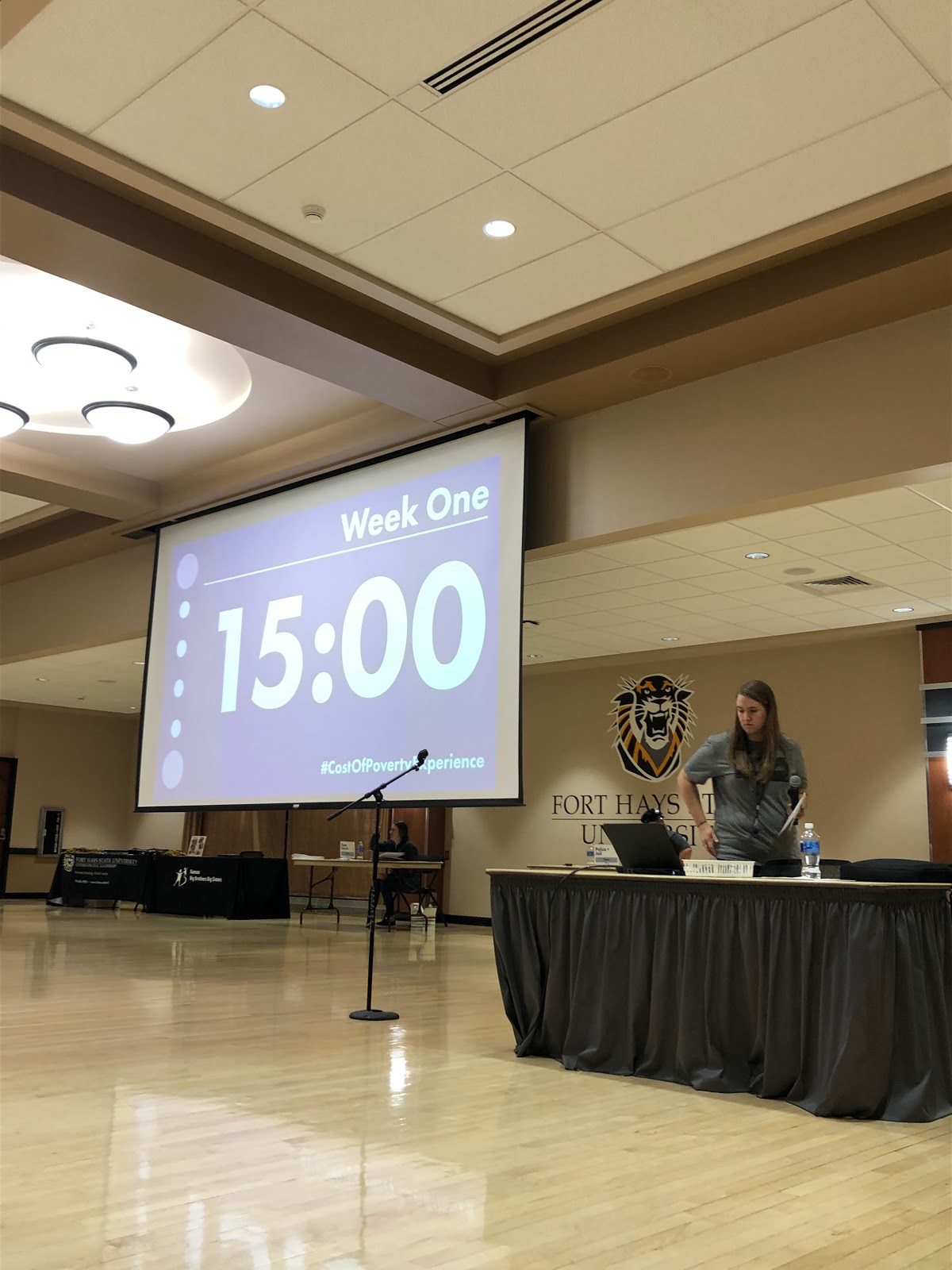By HAILEY CHAPMAN
Approximately 46.2 million people in America live in poverty. The Fort Hays State University Center for Civic Leadership partnered with CarePortal of Ellis County to host COPE: The Cost of Poverty Experience on Wednesday in the Memorial Union.
According to CarePortal, one in five children live in poverty, a number that should disturb most people. Alongside this, the Southern Education Foundation found 16% to 20% of students in Kansas come from low-income families. In fact, a majority of children in the public school systems come from low-income families.
COPE offers an opportunity for students to experience the lives of those impoverished. The exercise challenges students in an interactive simulation that represents one month living in poverty.
The community of Hays gathered Wednesday evening to delve themselves into this unique experience. For the duration of one hour, the group experienced four months in poverty broken up into 15-minute segments.
At the end of each segment, a whistle is blown and everyone must evaluate how they ended their month.
Two participants chat with a family wellness representative. In the simulation, individuals can visit family wellness for health care, exercise, and consultations. (Photo by Hailey Chapman)
Those participating are given a portfolio which explains who they are and what their life is like. Some were assigned to be students; students are required to attend school everyday and are provided transportation. Adults, however, are given much more responsibility.
Participants who were given the perspective of impoverished youth line up at the COPE school where they will spend the majority of their month. They are also granted free transportation, unlike the adults, to avoid truancy. (Photo by Hailey Chapman)
The group was guided through their goals by CarePortal Regional Manager Hallie Cable. Goals included: keeping their families safe, complete required tasks, and lastly, to be better off at the end of each month financially, relationally and within the community.
There were different tables designated as common areas an impoverished adult might visit in their day-to-day life. Homeless shelters, banks, employment offices, faith centers and family wellness centers were just a few of the places available to visit. Some places were required to visit, such as the person’s job or the gas stop once a week.
Each person also was required to find a means of transportation; some were given cars, and others were given a choice of a bus or walking. The bus pass had a fee, while the walking pass was free but would take up time rather than money.
Cable led the group through each month and upon completing the simulation,she talked about some misconceptions and valuable lessons to take away from the event.
“The purpose of the simulation is for people to see what it’s like to live an hour in poverty,” Cable said.
However, she added, this does not even touch the reality of a life in poverty.
Cable grew up in a one-parent household with a single mother who worked two jobs to make ends meet.
The Tiger Food Exchange set up a table in order for students to gain real life perspective on ways that they can help those experiencing poverty. Other tables were also set up for CarePortal, KSU Dining on a Dime, Saint Francis Foster Care, and First Care Clinic. (Photo by Hailey Chapman)
The goal, Cable said, is for individuals to leave the evening with a new found empathy and compassion for families struggling with poverty. Cable also shared her hope to eradicate common misconceptions of what causes poverty.
Some of the misconceptions include: poor choices cause poverty, a lack of knowledge causes poverty, a lack of connections causes poverty and a lack of resources causes poverty.
Prior to the simulation, a survey was conducted where each participant ranked which causes they believed to be the most prevalent in connection to poverty.
At the end of the event, Cable shared her thoughts on misconceptions and how she hopes the night positively affected the participants’ views on poverty.
“I think that part (of the struggle) is really the misconception- that you’re choosing to be poor, that you don’t work hard enough, and if you did you would have enough to make ends meet,” she said.
While people might consider laziness a large factor in poverty, there are many other factors that do not get considered as often.
“You don’t need to work harder. Some of these people work harder than anyone,” Cable said. “There really is incredible hurdles to overcome, oftentimes it’s generational poverty, mental illness. There is a lot more to it than meets the eye, and we really want to get that across in this exercise.”














